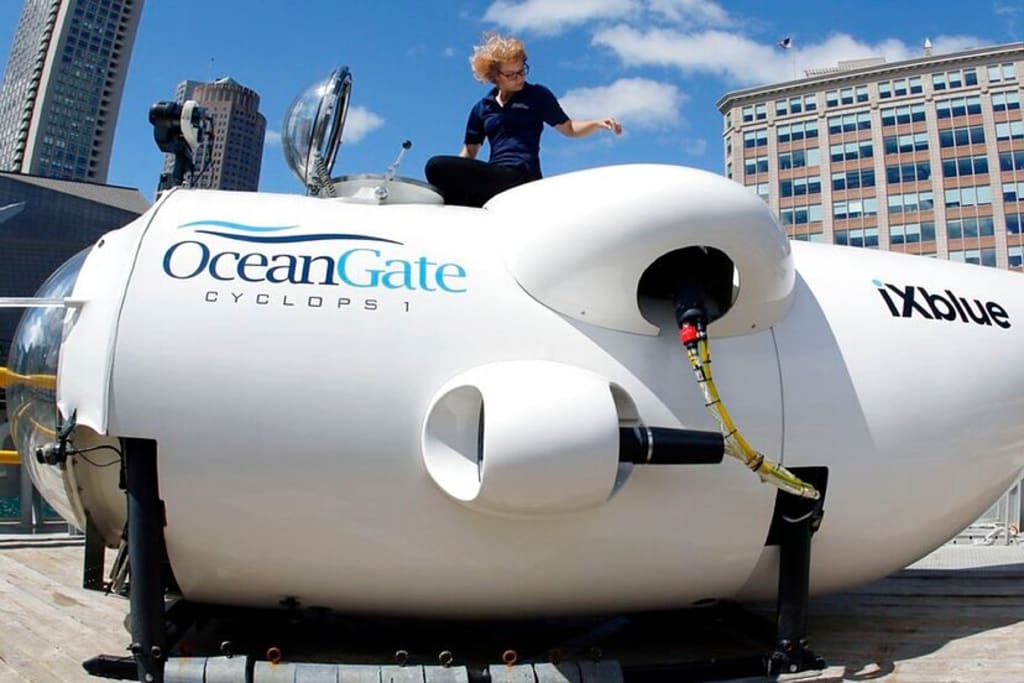The Perilous Dive:
Safety Concerns and Haunting Echoes of a Submersible Tragedy

In the relentless pursuit of answers, the ongoing search for the missing tourists aboard the ill-fated Titanic submersible has brought to light alarming revelations concerning the vessel's safety. Recent reports delve into the past, uncovering a hauntingly similar incident involving another submersible and raising concerns about its structural integrity. Science editor Rebecca Morrell delves into the unfolding details, shedding light on the matter.
Ocean Gate, the company behind the deep-sea submersible Titan, boasts unique features that set it apart from others in its class. The passenger compartment, constructed with carbon fiber and titanium caps, raises questions about the vessel's reliability under extreme pressures. While carbon fiber is commonly used in the construction of airplanes and yachts, its suitability for deep-sea exploration remains uncertain. Additionally, the Titan's tube-shaped design, accommodating up to five occupants, results in uneven pressure distribution, deviating from the more common spherical hulls found in other submersibles.
Safety concerns surrounding the Titan initially surfaced in 2018 when a former Ocean Gate employee, David Lockridge, voiced apprehensions about the submersible's untested structural integrity. Lockridge, an experienced submersible pilot, detailed the potential dangers faced by passengers in court documents. Moreover, engineers from the Marine Technology Society raised alarms about Ocean Gate's experimental approach, warning of possible negative outcomes ranging from minor incidents to catastrophic events. When approached for comment, an Ocean Gate spokesperson stated that they were unable to provide any information at the time.
Experts argue that this incident should serve as a catalyst for change, prompting a comprehensive investigation that can yield valuable lessons for the entire industry. Typically, independent safety assessments are conducted by specialized organizations for commercial passenger vessels. However, the Titan had not obtained certification from any external agency. In a 2019 blog post, Ocean Gate acknowledged that its design fell outside the accepted system, emphasizing the need to address operational risks beyond mere classification. This departure from established norms raises concerns about industry regulations and safety standards.
While submersibles capable of diving beyond 4,000 meters are considered unique vehicles, they can still undergo independent classification. The "Limiting Factor," another submersible with full certification, has repeatedly explored the deepest part of the ocean, the Mariana Trench, at a depth of nearly 11 kilometers. This example demonstrates that independent classification is possible even for groundbreaking submersibles, highlighting the necessity for robust safety practices.
As the fate of the Titan remains shrouded in mystery, this incident could mark a turning point in the regulation of the deep-sea exploration industry. The intense public interest and the thousands of followers invested in the search demonstrate the fascination with this otherworldly tragedy. The confined space, lack of escape options, and the race against time resonate with people's deepest fears. Comparisons have been drawn to previous incidents, such as the Chilean mine collapse in 2010, highlighting the extraordinary skills and coordination required for successful rescue operations.
However, amidst the attention on this specific rescue attempt, it is crucial to reflect on the discrepancy in media coverage and public concern for other life-threatening incidents. The recent capsizing of a migrant ship off the coast of Greece, with hundreds of people still missing, emphasizes the stark difference in attention and support received. The uniqueness and remote location of the submersible incident contribute to its captivating nature, engendering hopes for a miraculous rescue. Nonetheless, it is vital to recognize the ongoing humanitarian crises and persisting dangers faced by many others at sea.
Adding to the gravity of the situation, the unfolding investigation into the safety concerns surrounding the Titan and its chilling similarities to a previous incident beckon us to confront the underlying issues. The deep-sea exploration industry must strive for transparency, robust safety protocols, and adherence to international standards. The investigation into the missing Titanic submersible can be a pivotal moment to strengthen regulations, promote industry-wide collaboration, and ensure the safety of future underwater explorations.
In a world that yearns to conquer the unknown depths of our planet, it is imperative that we prioritize the well-being and security of those who venture into the abyss. As the search for the missing tourists continues, let us hope that their plight sparks meaningful change and safeguards the lives of future deep-sea explorers.
About the Creator
Enjoyed the story? Support the Creator.
Subscribe for free to receive all their stories in your feed. You could also pledge your support or give them a one-off tip, letting them know you appreciate their work.





Comments
There are no comments for this story
Be the first to respond and start the conversation.